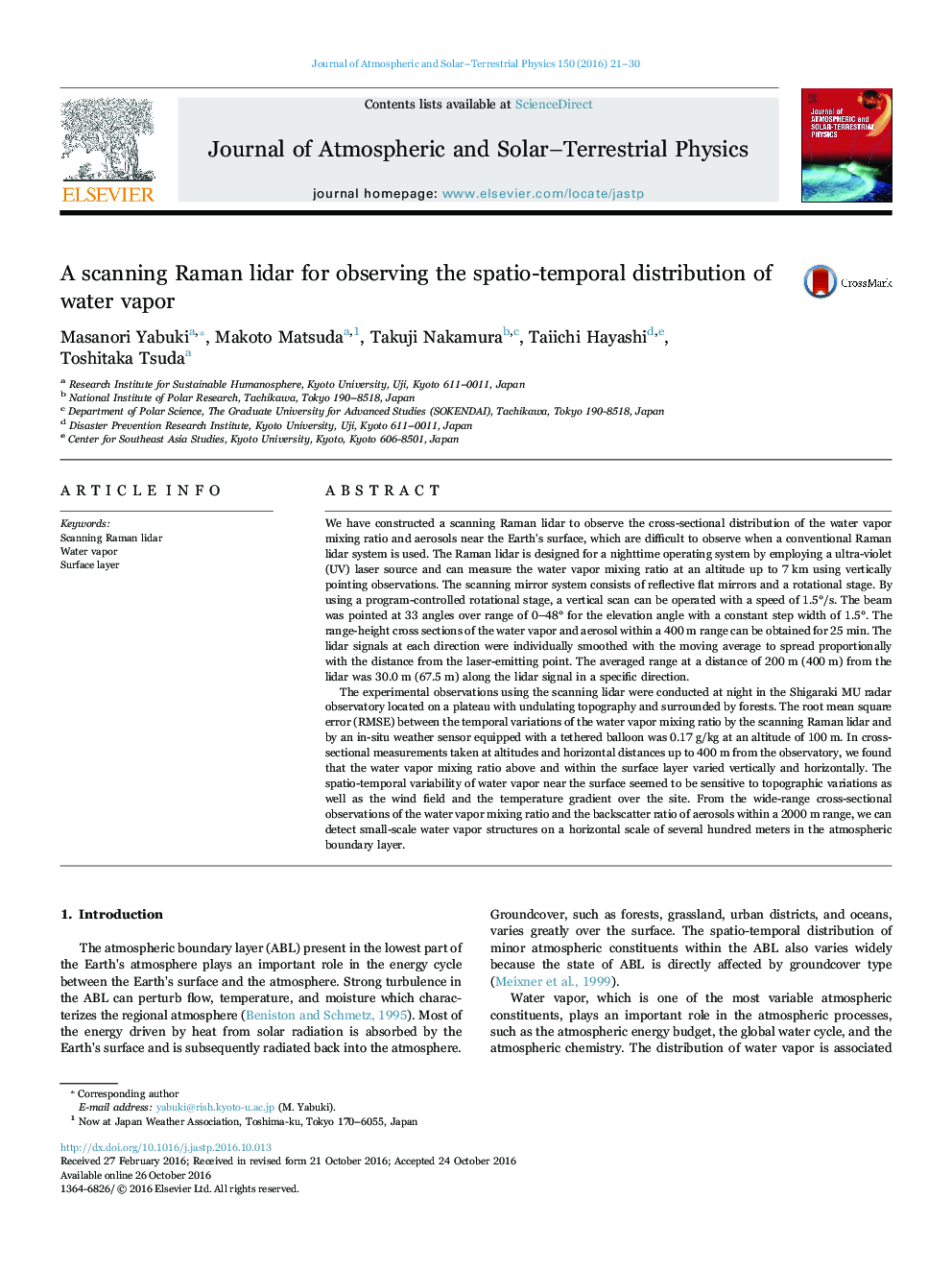| Article ID | Journal | Published Year | Pages | File Type |
|---|---|---|---|---|
| 5487644 | Journal of Atmospheric and Solar-Terrestrial Physics | 2016 | 10 Pages |
Abstract
The experimental observations using the scanning lidar were conducted at night in the Shigaraki MU radar observatory located on a plateau with undulating topography and surrounded by forests. The root mean square error (RMSE) between the temporal variations of the water vapor mixing ratio by the scanning Raman lidar and by an in-situ weather sensor equipped with a tethered balloon was 0.17Â g/kg at an altitude of 100Â m. In cross-sectional measurements taken at altitudes and horizontal distances up to 400Â m from the observatory, we found that the water vapor mixing ratio above and within the surface layer varied vertically and horizontally. The spatio-temporal variability of water vapor near the surface seemed to be sensitive to topographic variations as well as the wind field and the temperature gradient over the site. From the wide-range cross-sectional observations of the water vapor mixing ratio and the backscatter ratio of aerosols within a 2000Â m range, we can detect small-scale water vapor structures on a horizontal scale of several hundred meters in the atmospheric boundary layer.
Keywords
Related Topics
Physical Sciences and Engineering
Earth and Planetary Sciences
Geophysics
Authors
Masanori Yabuki, Makoto Matsuda, Takuji Nakamura, Taiichi Hayashi, Toshitaka Tsuda,
